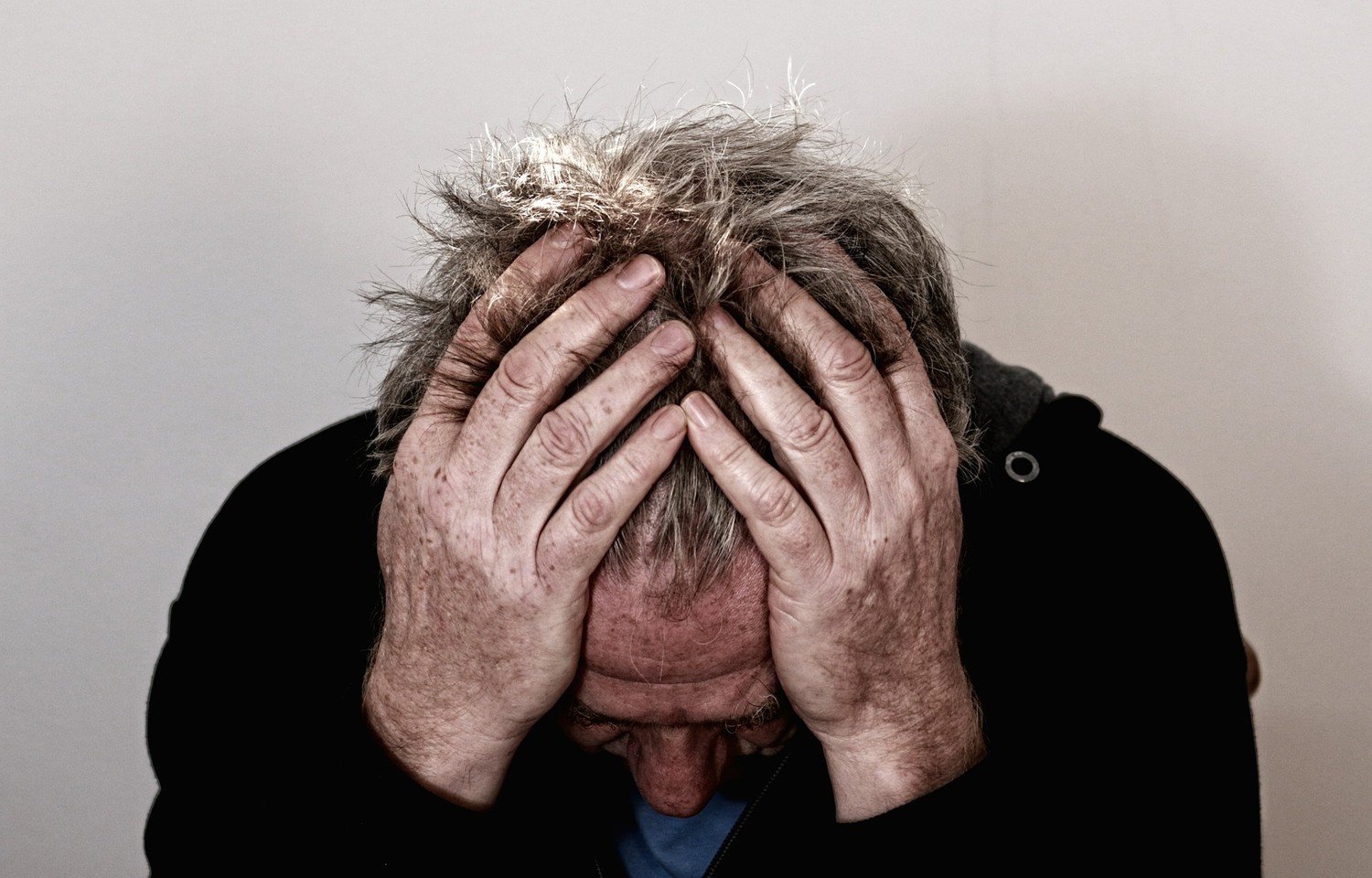
It’s a Guy Thing: How Eating Disorders Affect Men Too
by Micaal Ahmed
In this day and age, a lean face, bulging biceps, packs of abs and a barrel chest are all ingredients needed to make a man look the way he is “supposed to”. And when you look at Steven Nguyen, he is the perfect blend of all these ingredients. When you look at him you would think either: “model” or “gym-junkie”.
“I have a body most men would kill for,” admits 29-year-old Nguyen, an Edmonton resident and the founder of Hustle and Gains apparel.
No one is going to look at Nguyen and think “recovering bulimic”.
However, 2015 marked the year which finally gave Nguyen an upper hand in his battle with bulimia nervosa; a battle which had started 10 years before then. A battle which he didn’t even realize was one till he was three years into it. And a battle which, he realized, he needed to win when he and his fiancée talked about having children, so that he could live to be a part of their lives.
Nguyen’s story as a man suffering from an eating disorder isn’t an abnormal occurrence, or even a rare one. He is just one of thousands of Canadian men who struggle with eating disorders – most of them in silence.
“Traditionally, eating disorders have been seen as illnesses of women,” says Dr. Blake Woodside, the a psychiatrist with Toronto General Hospital’s eating disorders program.
Yet, contrary to popular belief, you don’t have to be a privileged, skinny, teenaged girl to have an eating disorder.
In fact, men account for about one in 10 cases of eating disorders in Canada according to the Eating Disorder Support Network of Alberta (EDSNA) – meaning that, a total of 120,000 to almost 200,000 men may meet the criteria for an eating disorder, based on 2014 estimates of the total number of people with eating disorders by the Standing Committee on the Status of Women. And because men are less likely to seek treatment and doctors are less likely to look for the signs of an eating disorder in male patients, the numbers are almost certainly higher, experts agree.
“I personally think that the numbers of men suffering from eating disorders are much higher than the ones in the literature, because those are just the cases which are reported,” said Lauren Drouillard, the program manager at Sheena’s Place, a centre in Toronto, that offers support to people suffering from eating disorders and their families.
It’s a silent epidemic which affects millions of men worldwide. In the United States alone, an estimated 10 million men will suffer from a clinically significant eating disorder at some point in their lives, according to the 2011 Epidemiology of Eating Disorders. Some research suggests the incidence of eating disorders amongst men has been rising in recent years: The number of men diagnosed with an eating disorder in the United Kingdom increased by 27 per cent from 2000 to 2009, according to a 2013 study by King’s College, London and the University College London Institute of Child Health.
However, it’s unclear whether the trend is growing or whether more men are coming forward now, said Lena Sheffield, a board member for the U.S.-based National Association for Males with Eating Disorders (N.A.M.E.D). “I don’t know if eating disorders are increasing, as much as we are identifying them quicker.”
“Eating disorders are always going to impact the same number of men,” said Sam Halevy, a 32-year-old Torontonian who suffers from bulimia nervosa and the binge eating disorder. “The numbers just depend on how many men are willing to come forward.”
Stepping away from the very broad term of “eating disorder”, the three most common eating disorders are: (a) anorexia nervosa, five per cent of whose victims are men, (b) bulimia nervosa, 20 per cent of whose victims are men and (c) the binge eating disorder, 40 per cent of whose sufferers are men.
“Anorexia is probably the most lethal psychiatric illness in terms of gross mortality rates,” Woodside explained at a November 2013 meeting of the Standing Committee on the Status of Women. “That’s something people find difficult to believe when they're first told about it, but it is the case.”
The mortality rate for anorexia nervosa is 10 to 15 per cent. This means that of the 150,000 Canadians who are currently suffering from the disorder, between 15,000 to 23,000 will not survive.
Bulimia nervosa, while being less lethal, still has a death rate of around five per cent, according to Woodside.
“The cumulative death rate from these two conditions would be on the order of 1,000 to 1,500 people per year,” Woodside told the committee. “Prostate cancer in Canada kills between 3,500 and 4,000 people per year, so it's a bit less than that, but we're in the same ballpark”.
And as for the reasons why men suffer from eating disorders, researchers know next to nothing, advocates say.
“Sadly there’s not a whole of research on eating disorders in general, and when you narrow that down to look at men and eating disorders – holy smokes we’ve got next to nothing,” said Drouillard.
Generally speaking, the causes of eating disorders are complex, and have nothing to do with the common belief that they stem from attention-seeking behaviour or an obsession with appearance, experts say.
“The complexity of how people get eating disorders is so individual, so multifactorial; there are so many pieces coming together in a perfect storm,” said Sue Huff, the executive director of EDSNA.
For some, eating disorders serve as a coping mechanism when faced with stress and anxiety.
“Eating disorders have almost nothing to do with food, weight or shape. They develop as a means or strategy to deal with a variety of emotions and personal conflicts,” said Dr. Brian Smart, the associate medical director of the Eating Recovery Centre in Bellevue, Washington. “They are serving a purpose, albeit in a manner that will affect someone’s health, relationships and success in life.”
And many other times, eating disorders are a reaction to abuse. Woodside told the Standing Committee on the Status of Women that 60 per cent of his patients had a history of sexual or physical abuse.
Traumatic or stressful events from childhood can sometimes create a snowball effect which cumulates in an eating disorder in later years.
When Nguyen goes back to 2005, to the onset of his bulimia, he says that childhood obesity, an obsession with food, combined with a mother who wanted him to be healthy so bad that she would insult and threaten him so that he would eat better and a sibling rivalry with a “perfect” brother who was loved by everyone, resulted in a binge-purge cycle that he had no control over for 10 long years.
Most experts, however, agree that genetic factors play a key role in eating disorders. It’s not just about wanting to look like someone on a magazine cover. If you have the gene for an eating disorder, it can be activated at any point of your life, most commonly by trauma or dieting.
“I think societal pressure to look a certain way can influence the onset of an eating disorder, but it’s not a cause of eating disorders,” said Wendy Preskow, the president of the National Initiative for Eating Disorders, and the mother of a daughter battling eating disorders.
“Genetics loads the gun, while the environment pulls the trigger,” added Len Preskow, Wendy’s husband.
And as men affected by eating disorders struggle to either cope with their disorder, or to find the courage to confront it, advocacy groups are urging public-health officials to debunk the common perception of eating disorders as a women’s problem. In particular, they warn that the lack of awareness among doctors is putting men’s lives at risk.
“There is a bias within our society, and within our medical system, that doesn’t recognize that men get eating disorders as well,” said Huff. “This is a real barrier for those who need help.”
“If there’s a man that is exhibiting all the signs and symptoms of an eating disorder, often the medical doctor will actually ignore the obvious diagnosis, and they will go into a battery of other tests,” explained Huff.
Many men are reluctant to seek medical care as a result, observers say.
“I don’t believe that doctors, or psychologists or psychiatrists, have sufficient information to assist me as a male,” Halevy said, explaining why he chooses not to seek treatment for his eating disorders. “I don’t have enough faith in the health system.”
This lack of awareness harms not just men, but all sufferers of eating disorders, observers say, pointing out that treatment facilities and other kinds of support are scarce across Canada.
“The system is broken. Actually, it doesn’t even properly exist,” said Wendy Preskow.
Despite the fact that there are thousands of people with eating disorders in Ontario, there are only 20 adult in-patient beds for those who fall seriously ill, she pointed out.
And the people currently on waiting lists for these 20 beds, are going to be doing so for months to come.
“There are thousands and thousands and thousands of people with eating disorders in Ontario and there’s only 20 beds,” said Amy Preskow, Wendy and Len’s daughter who’s fighting her own battles with eating disorders.
“And the waiting list … people have died waiting,” she sighed.
Halevy blames both the federal and provincial governments for the lack of facilities: “The government has literally turned their backs on a mental health issue which takes more lives than any other one,” said Halevy.
Woodside agreed, adding that officials have been neglecting the issue because they, too, see eating disorders as a women’s problem, and the medical system remains deeply misogynistic.
“We have the worst access to the treatment of eating disorders in the developed world,” said Woodside, over a phone call. “We have fewer programs, fewer beds, fewer trained professionals – it’s a national disgrace.”









